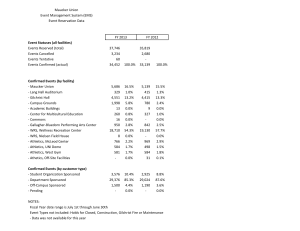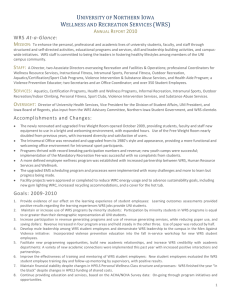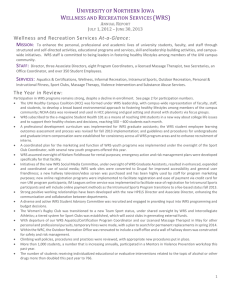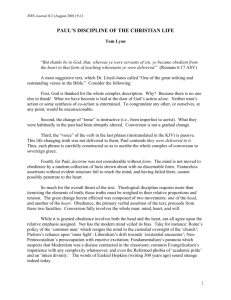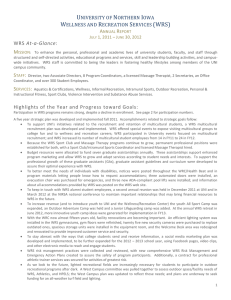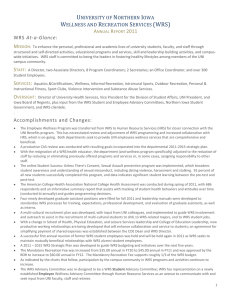Combining the run and Mann-Whitney-Wilcoxon tests H
advertisement
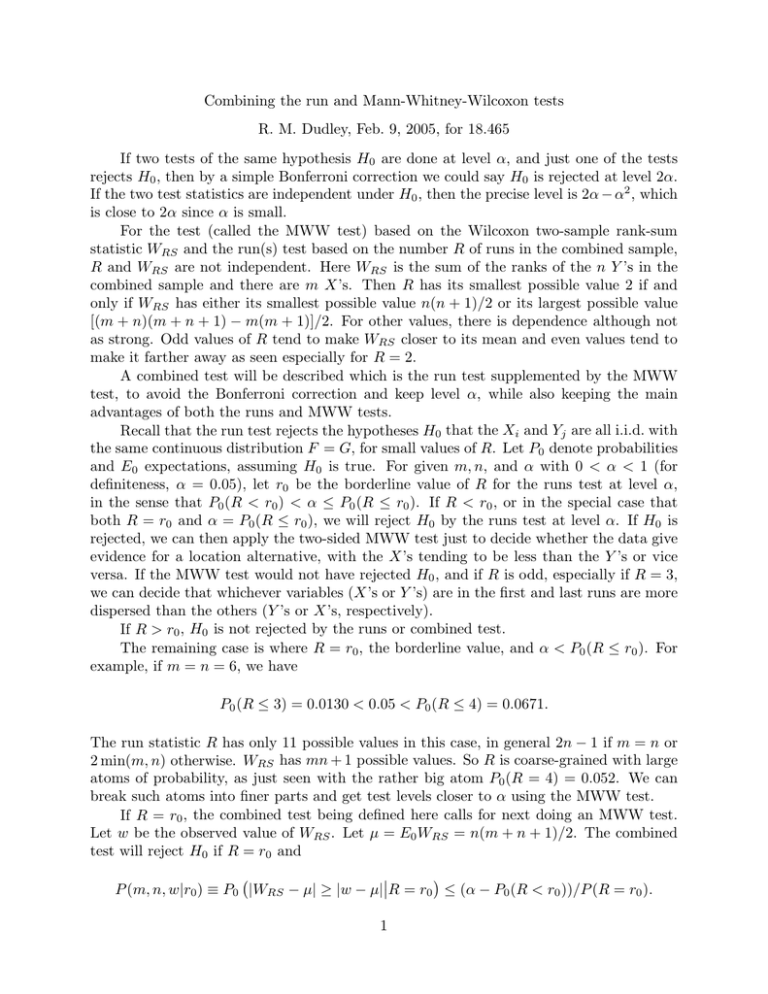
Combining the run and Mann-Whitney-Wilcoxon tests R. M. Dudley, Feb. 9, 2005, for 18.465 If two tests of the same hypothesis H0 are done at level α, and just one of the tests rejects H0 , then by a simple Bonferroni correction we could say H0 is rejected at level 2α. If the two test statistics are independent under H0 , then the precise level is 2α − α2 , which is close to 2α since α is small. For the test (called the MWW test) based on the Wilcoxon two-sample rank-sum statistic WRS and the run(s) test based on the number R of runs in the combined sample, R and WRS are not independent. Here WRS is the sum of the ranks of the n Y ’s in the combined sample and there are m X’s. Then R has its smallest possible value 2 if and only if WRS has either its smallest possible value n(n + 1)/2 or its largest possible value [(m + n)(m + n + 1) − m(m + 1)]/2. For other values, there is dependence although not as strong. Odd values of R tend to make WRS closer to its mean and even values tend to make it farther away as seen especially for R = 2. A combined test will be described which is the run test supplemented by the MWW test, to avoid the Bonferroni correction and keep level α, while also keeping the main advantages of both the runs and MWW tests. Recall that the run test rejects the hypotheses H0 that the Xi and Yj are all i.i.d. with the same continuous distribution F = G, for small values of R. Let P0 denote probabilities and E0 expectations, assuming H0 is true. For given m, n, and α with 0 < α < 1 (for definiteness, α = 0.05), let r0 be the borderline value of R for the runs test at level α, in the sense that P0 (R < r0 ) < α ≤ P0 (R ≤ r0 ). If R < r0 , or in the special case that both R = r0 and α = P0 (R ≤ r0 ), we will reject H0 by the runs test at level α. If H0 is rejected, we can then apply the two-sided MWW test just to decide whether the data give evidence for a location alternative, with the X’s tending to be less than the Y ’s or vice versa. If the MWW test would not have rejected H0 , and if R is odd, especially if R = 3, we can decide that whichever variables (X’s or Y ’s) are in the first and last runs are more dispersed than the others (Y ’s or X’s, respectively). If R > r0 , H0 is not rejected by the runs or combined test. The remaining case is where R = r0 , the borderline value, and α < P0 (R ≤ r0 ). For example, if m = n = 6, we have P0 (R ≤ 3) = 0.0130 < 0.05 < P0 (R ≤ 4) = 0.0671. The run statistic R has only 11 possible values in this case, in general 2n − 1 if m = n or 2 min(m, n) otherwise. WRS has mn + 1 possible values. So R is coarse-grained with large atoms of probability, as just seen with the rather big atom P0 (R = 4) = 0.052. We can break such atoms into finer parts and get test levels closer to α using the MWW test. If R = r0 , the combined test being defined here calls for next doing an MWW test. Let w be the observed value of WRS . Let µ = E0 WRS = n(m + n + 1)/2. The combined test will reject H0 if R = r0 and � � � P (m, n, w|r0 ) ≡ P0 |WRS − µ| ≥ |w − µ|�R = r0 ≤ (α − P0 (R < r0 ))/P (R = r0 ). 1 If w is not far enough from µ for the above inequality to hold, then H0 is not rejected when R = r0 . The resulting combined test has level between P (R < r0 ) and α and is usually much closer to α than P (R < r0 ) is. The conditional probabilities P (m, n, w|r0 ), as functions of four variables, would need to be found by a computer as needed. The unconditional probabilities P (m, n, w) = P0 (|WRS − µ| ≥ |w − µ|) are available from tables for some w and existing computer packages for general w. The upper bound P (m, n, w|r0 ) ≤ P (m, n, w)/P (R = r0 ) may be helpful: we can reject H0 if P (m, n, w) ≤ α − P0 (R < r0 ). In the example with m = n = 6, α = 0.05, and r0 = 4, H0 will be rejected if R = 4 and |w − µ| ≥ 8, as found by hand calculation. Here µ = 39. The resulting combined test will have level quite close to α. About alternatives, the (unconditional) two-sided MWW test for m = n = 6 will reject H0 at level α = 0.05 only if |w − 39| ≥ 13. If that happens we can decide for a location alternative when R = 4. Otherwise, if R = 4 and 8 ≤ |w − 39| < 13, we reject H0 without specifying a type of alternative, because we’ve done it with the runs and MWW tests combined, not with either one separately. 2

